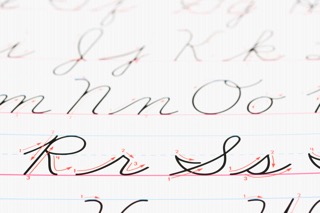Got Hashimoto’s brain? Trade your keyboard for a pen

Do your fingers whir across the keyboard, but your brain is left in the dust thanks to Hashimoto’s? One small but effective way to improve brain health is as simple as putting a pen to paper for a little bit each day. Research shows that although keyboards make writing fast and easy, they also make for sloppier brain function compared to handwriting.
Handwriting has been phased out of everyday life and school curriculums. Studies show many people can’t remember the last time they had to write something by hand and many children don’t know how to properly hold a pen or pencil because it’s barely taught in school.
This is bad news for our brains, say experts. The reason it takes children several years to learn how to write is because writing requires so many different areas of the brain to work simultaneously, enhancing development.
Likewise, college students who take notes by hand understand the material better than computer note takers. Note taking by hand requires more focus and discernment, enhancing memory, while taking notes on a laptop note can turn into mindless transcription.
In fact, taking notes by computer actually impairs the learning process while handwriting enhances it, thanks to the motor skills involved.
For the person working to improve brain function as part of an overall plan to manage autoimmune Hashimoto’s, small efforts such as handwriting to improve brain function can reap large rewards.
Why handwriting is better for the brain
Neuroscience has discovered a variety of reasons why handwriting is better for the brain than typing. When you’re managing Hashimoto’s, these factors can help you improve your brain health.
- It activates learning pathways in the brain.
- It stimulates more ideas and creativity.
- Cursive writing can help remedy dyslexia.
- Taking notes by hand improves memory.
- A handwritten piece has more personality than something type written, thus improving human connection.
- Handwriting involves fine motor skills that involve more areas of the brain in the learning process.
Perhaps those missing out most on the neurological benefits of handwriting are the children who barely learn it. Cursive writing is largely no longer being taught and keyboard proficiency takes precedence over writing after first grade.
Brain scans of children learning letters through writing versus through typing showed writing activates various parts of the brain while typing hardly activates it at all. In other words, those messy first stabs at writing that gradually improve with practice are building neurological foundations that make learning easier and more enduring.
Handwriting improves Hashimoto’s health
Because it boosts brain function, handwriting can improve your health. You can further supercharge the benefits of handwriting based on what you write about Using specific journaling practices will not only give you the benefits of handwriting but the content of your writing can help you better manage your autoimmune Hashimoto’s. Look what studies below show.
- Writing down your thoughts and feelings can make your wounds heal faster.
- Writing 20 minutes a day improves quality of life for patients with cancer.
- People who keep a gratitude journal are more optimistic and exercise more.
- Writing down what you’re grateful for at night can improve sleep.
- Expressive writing has been shown to improve mental and physical well-being.
Whether you keep a gratitude journal, take class notes by hand, or commit to regularly writing an older relative handwritten letters, handwriting is a small but effective way to boost your quality of life when you have Hashimoto’s hypothyroidism.